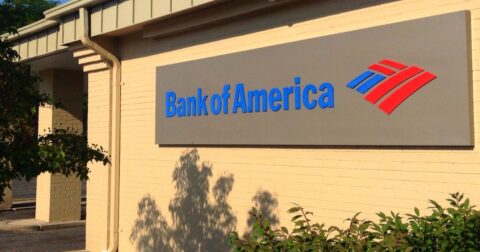News
Meat Consumption Grows in US and Asia, While Europe is on the Decline
Climate•3 min read
Reported
A new report documents the banking industry’s investments in the meat and dairy industry, and its climate pollution.


Words by Grace Hussain
Three of the largest banks in the United States are also some of industrial agriculture’s biggest funders, according to a new report from the nonprofit Friends of the Earth and Profundo, a research firm. Despite setting net zero climate goals — a pledge to bring greenhouse gas emissions to a balance of zero by 2050 — Citigroup, Bank of America and JP Morgan Chase handed $74 billion in financing to meat, dairy and feed corporations between 2016 and 2023.
The billions they loan to industrial agriculture companies represent a quarter of a percent of their financing portfolios. But even though that amount is only a drop in the bucket of the banks’ investments, the top three banks’ funding is tied to 24.4 million metric tons of carbon dioxide equivalents — roughly the same amount spewed by burning 27.3 billion pounds of coal — and, in the case of Bank of America, 14 percent of their financed emissions.
All three banks are members of the United Nations Net Zero Banking Alliance, an agreement In which banks pledged to accomplish net zero emissions in their lending and investments by 2050. Among the industries the banks must set goals for is agriculture — a sector that contributes around a quarter of all emissions and which the alliance recognizes as “carbon-intensive.”
“They will not meet [their net zero] targets if they don’t actually effectively address the sector of industrial livestock,” says Monique Mikhail, who heads some of Friends of the Earth’s campaigns and contributed heavily to the report.
The impacts of global warming pose a threat to the financial industry. As temperatures rise and extreme weather events become more common and severe, banks risk their assets dropping in value, as well as a potential increase in loan defaults from businesses hit by or experiencing fallout from hurricanes, tornadoes, flooding and other environmental pressures. The industry passes on that risk to consumers and business borrowers to pay the price when banks offer smaller loan amounts or approve fewer loans.
The meat and dairy industries have a track record of misrepresenting their emissions when self-reporting. This new report highlights how the meat and dairy industries do this, by omitting the largest sources of their emissions. These sources are what climate scientists call “Scope 3 emissions,” emissions that are “indirect” because they happen within the supply chain but are not produced by the self-reporting company. For example, a corporation like Tyson Foods or JBS that processes and sells meat often does not include emissions from actual cattle farms, which are where the land use and cattle burps, the largest drivers of emissions from food, actually happen.
In the case of many meat, dairy and feed industry giants, these Scope 3 emissions account for 90 percent or more of their total emissions. Yet the researchers found that less than a quarter of the agricultural companies they reviewed reported their Scope 3 emissions, and more than half of them didn’t report emissions at all. Based on the research team’s calculations in fact, the meat and dairy companies’ actual emissions could be four times greater than what they self-report.
Given their outsized emissions, the banking industry’s decision to maintain funding for meat, dairy and feed companies contributes to ongoing climate pollution. While the industry represents only 0.28 percent of Bank of America’s portfolio, 0.36 percent of Citigroup’s and 0.17 percent of JP Morgan Chase’s, these investments are responsible for 14 percent, 10 percent and 9.5 percent of their respective funded emissions, respectively.
It’s not surprising that the banking industry isn’t addressing food-related emissions, as it’s often a blind spot for most consumers, and is under-reported by climate news media. “They’ve been focusing more on the fossil fuel industry than they have been focusing on agriculture,” says Friends of the Earth’s Mikhail. “I think a lot of them just are not as aware [of] food and agriculture and its impact on the climate as they are the fossil fuel industry.”
In its most recent climate report, Citigroup cites food security, industry complexity and existing methods of managing carbon emissions as reasons why they “do not plan to set emissions reduction targets for [the] sector.” Sentient reached out to Bank of America, Citigroup and JP Morgan Chase for a comment on the report. A media relations representative for Bank of America said, in an email, “We will not be commenting on this one,” while a representative for Citigroup emailed in response, “We don’t have a comment on this report.” JP Morgan Chase did not respond to Sentient’s request.
“Food insecurity is not an issue of production,” argues Mikhai, adding “it’s actually an issue of distribution.” The dairy and meat industries are increasingly investing in technological solutions for emissions from production, like feed additives and methane digesters. While for investors — including Citigroup — these fixes may be enough of an effort to maintain their financing, Mikhail argues that they’re not enough.
“A lot of these techno fixes that have been proposed aren’t really going to get at the core of the problem,” she says, which is just how much meat people in the U.S. and other global north countries consume as compared to the global average. A recent letter signed by 200 climate researchers echoed this warning, urging that significant emissions reductions from factory farms need to take place in the next five years in order to limit global warming and avoid its worst impacts on a global scale.